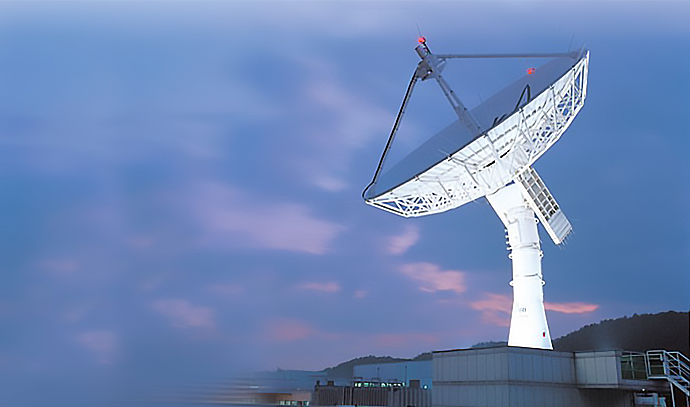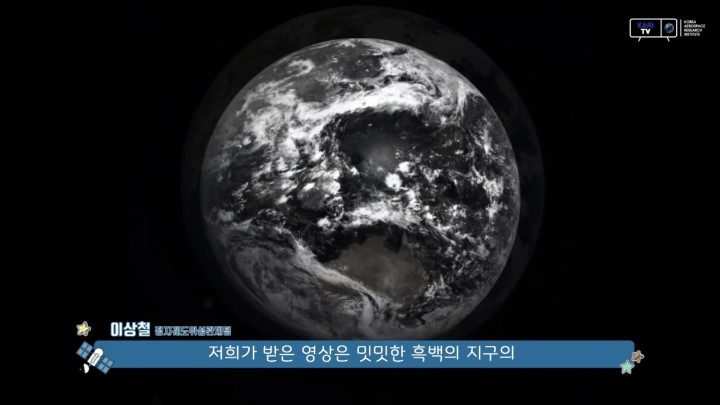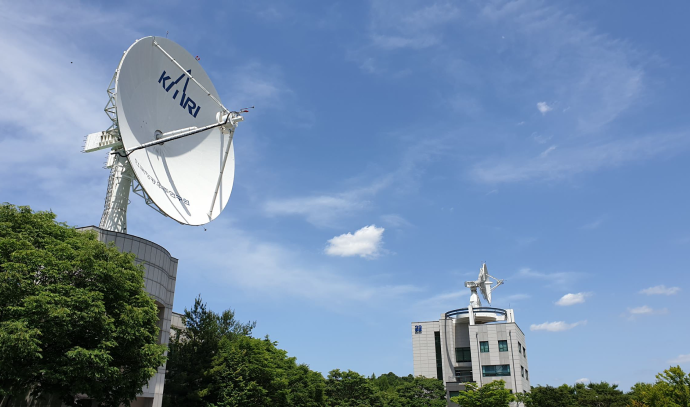

Establishment and Operation of Satellite Ground Station Systems
To support Multi-purpose Practical Satellite (Arirang) No.1, KARI established Korea’s first satellite ground station and later independently developed the Chollian satellite ground system. Today, KARI successfully operates a fleet of eight national satellites, including Multi-purpose Practical Satellite (Arirang) No.3, No.5, No.3A, Chollian-1, No.2A, No.2B, the Next-Generation Medium Satellite-1, and Micro Satellite Cluster-1.
To prepare for the operation of multiple satellites, including those in low Earth orbit (LEO) and geostationary orbit (GEO), KARI is conducting research on the automation of satellite operations and exploring the application of AI technologies for satellite status monitoring and anomaly detection.
The satellite ground station system comprises three subsystems: the Satellite Control System, the Antenna System, and the Image Processing System.
- Satellite Control System: Remote tracking and commanding, satellite operations, mission and orbit analysis
- Antenna System: Ground-based transmission and reception using large antennas, RF equipment, and MODEM/baseband units
- Image Processing System: User request management, image acquisition planning, data processing, and distribution
KARI continues to enhance satellite operational efficiency and reliability through ongoing technological advancement.
Deployment and Operation of Domestic and Overseas Ground Station Antennas
한KARI has expanded satellite utilization by establishing and operating ground stations, both domestically and internationally.
Domestic Ground Stations- Daejeon Headquarters: Operates two antennas (7.3m and 13m) for LEO satellite control and reception, and three antennas for GEO satellite operations
- Jeju National Satellite Operations Center: Houses the integrated national satellite operation system and manages LEO satellite operations
- 35m Deep Space Ground Antenna in Yeoju, Gyeonggi-do: Supports Danuri mission operations and conducts lunar and deep space communication research
- King Sejong Station in Antarctica (2004): Installed a small antenna for LEO satellite operations
- Weno Island, Micronesia (2014): Operates a 2.4m antenna for both LEO and GEO satellites
- Additional Foreign Stations: Used for KOMPSAT command transmission, emergency operations, and image data reception
Development of the National Integrated Satellite Operations System
To efficiently manage the growing number of national satellites and provide structured access to satellite data, KARI developed the National Integrated Satellite Operations System. This system established a robust platform for managing various satellite types and was designed for scalability to accommodate future satellite launches. It is composed of six subsystems—User Support, Image Processing, Command & Telemetry, Antenna, Network, and Data Systems—and supports the normal operation of LEO national satellites from the Jeju-based center. The system will also support the operation of future satellites, with KARI continuing research to advance satellite operation and management technologies.
Ensuring Safe Space Activities and Protection of Space Assets
Since the advent of space travel and operations, the number of launch vehicles and satellites sent into orbit has steadily increased. To address orbital environment issues, KARI joined the Inter-Agency Space Debris Coordination Committee (IADC) in 2014 and is committed to ensuring the long-term sustainability of space activities. Key initiatives include developing collision avoidance maneuvers through the close-proximity monitoring of space objects, real-time tracking and analysis of space debris, identifying technical measures for debris mitigation, participating in international SSA guideline development, and promoting collaborative efforts to safeguard the space environment. Looking ahead, KARI will focus on foundational research for digital twin-based platforms for real-time space traffic management and safety, along with studies on the implementation of launch, operation, and disposal guidelines for space objects.




